Tenryuji Temple (original) (raw)
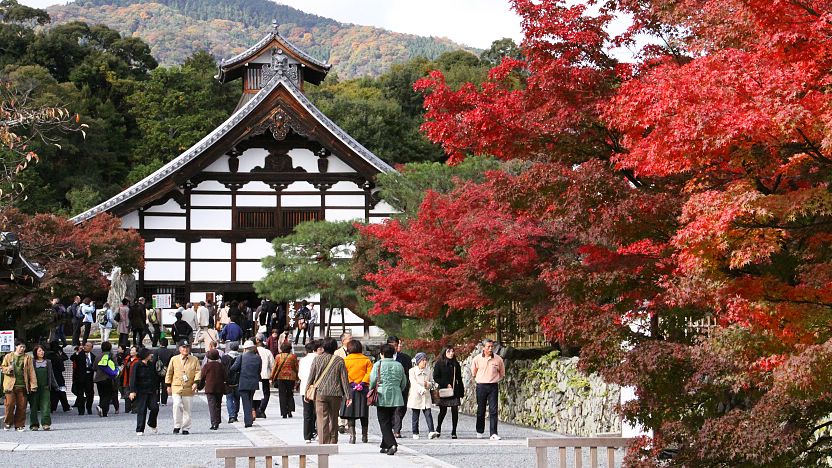
Tenryuji's Kuri building
Tenryuji (�V����, Tenryūji) is the most important temple in Kyoto's Arashiyama district. It was ranked first among the city's five great Zen temples, and is now registered as a world heritage site. Tenryuji is the head temple of its own school within the Rinzai Zen sect of Japanese Buddhism.
Tenryuji was built in 1339 by the ruling shogun Ashikaga Takauji. Takauji dedicated the temple to Emperor Go-Daigo, who had just passed away. The two important historic figures used to be allies until Takauji turned against the emperor in a struggle for supremacy over Japan. By building the temple, Takauji intended to appease the former emperor's spirit.

Inside the Drawing Hall (Shoin)
Tenryuji's buildings were repeatedly lost in fires and wars over the centuries, and most of the current halls, including the main hall (Hojo), drawing hall (Shoin) and temple kitchen (Kuri) with its distinctive small tower, date from the relatively recent Meiji Period (1868-1912).
Unlike the temple buildings, Tenryuji's garden survived the centuries in its original form. Created by the famous garden designer Muso Soseki, who also designed the gardens of Kokedera and other important temples, the beautiful landscape garden features a central pond surrounded by rocks, pine trees and the forested Arashiyama mountains. Muso Soseki also served as Tenryuji's first head priest.

Tenryuji is just a short walk from the Keifuku Arashiyama Station, which is connected by the small Keifuku trains (also referred to as Randen) with the Ryoanji/Kinkakuji area and Omiya Station along Shijo-dori Street. The temple can also be reached in a 5-10 minute walk from JR Saga-Arashiyama Station (10-15 minutes, 240 yen one way from Kyoto Station).
How to get to and around Kyoto
Hours
8:30 to 17:00 (entry until 16:50)
Admission
500 yen (an extra 300 yen for entrance into the temple buildings)
Questions? Ask in our forum.
-
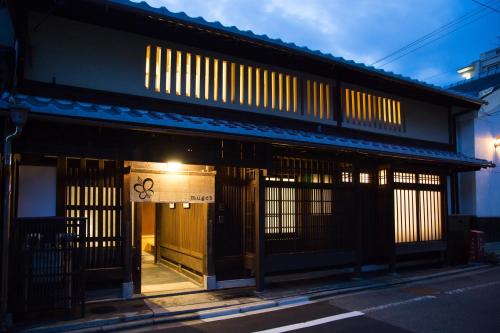
Ryokan Mugen (Adult Only)
Luxury
Mugen is a property that was built 160 years ago, situated in Kyoto, 1 km from Nijo Castle. Every room at Mugen features an en suite shower room, toilet, free toiletries and a hairdryer. Free WiFi is available throughout the entire property. You will find a shared lounge on site and a bar at the annex building. The ryokan also offers bike hire. Imperial Palace is 1.1 km from Mugen, while Kitano Tenmangu Shrine is 1.6 km from the property. The nearest airport is Osaka Itami Airport, 39 km from the property.
View on Booking.com
9.9Booking.com -
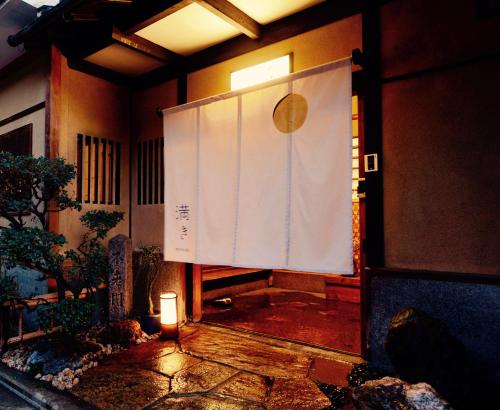
Mitsuki Kyoto
Budget-friendly
Set in Kyoto, 600 metres from Kyoto International Manga Museum and 1.4 km from the centre, Mitsuki Kyoto offers air-conditioned accommodation with free WiFi, and a garden. This 2-star ryokan offers full-day security and luggage storage space. The accommodation provides a concierge service and a housekeeping service for guests. The units in the ryokan are equipped with a kettle. There is a private bathroom with bidet in every unit, along with slippers, a hair dryer and free toiletries. At the ryokan, the units are equipped with bed linen and towels. The ryokan serves a vegetarian and vegan breakfast and breakfast in the room is also available. A bar can be found on-site. Nijo Castle is 1.1 km from Mitsuki Kyoto, while Kyoto Shigaku Kaikan Conference Hall is 1.8 km away. The nearest airport is Itami Airport, 46 km from the accommodation.
View on Booking.com
9.9Booking.com -
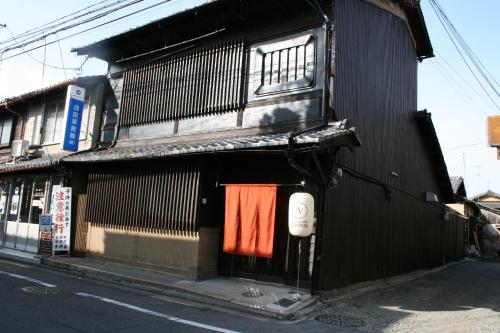
Guesthouse KYOTO COMPASS
Budget-friendly
Located in Kyoto, this traditional Japanese guest house features free Wi-Fi and a free public computer. Shichijo Onmae bus stop is 3 minutes�f walk away. A seating area and shared bathroom are provided with each room at Guesthouse KYOTO COMPASS. Free toiletries are provided and blankets are available upon request. Select rooms have a garden view. A shared living area and bicycles are available for guests�f use during their stay at this Kyoto Guesthouse Compass. Access to the shared kitchen is available upon request. The guest house is 4.5 km from Imperial Palace and 2.2 km from Kyoto Station. Nijo Castle and Toji Castle are within a 30 minutes�f bus ride away.
View on Booking.com
9.8Booking.com -
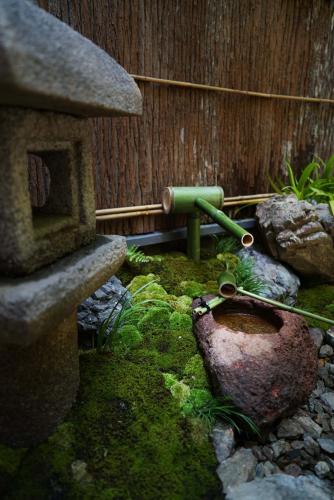
Ryokan Tori
Mid-range
Ryokan Tori is located in Kyoto, 2 km from Kitano Tenmangu Shrine. The property is around 2.3 km from Nijo Castle and Kyoto Imperial Palace. The property is 3.2 km from Kinkaku-ji Temple and 3.7 km from Kyoto International Manga Museum. All guest rooms in the ryokan are fitted with a kettle. Each room has a shared bathroom, while selected rooms are fitted with a balcony and others also offer a garden view. All rooms will provide guests with a fridge. Guests at tori can enjoy an Asian breakfast. Heian Shrine is 5 km from the accommodation. Itami Airport is 50 km from the property.
View on Booking.com
9.8Booking.com -

Yado Kiramachi
Luxury
Yado Kiramachi offers accommodation set 600 metres from the centre of Kyoto and provides a garden and a terrace. The air-conditioned accommodation is 600 metres from Kyoto Shigaku Kaikan Conference Hall. The ryokan features family rooms. The units at the ryokan come with a seating area. The units have a coffee machine, a private bathroom and free WiFi, while selected rooms will provide you with a balcony and some have garden views. At the ryokan, all units include bed linen and towels. A bar can be found on-site. Kyoto International Manga Museum is 1.3 km from the ryokan, while Gion Shijo Station is 1.6 km away. The nearest airport is Itami Airport, 45 km from Yado Kiramachi.
View on Booking.com
9.8Booking.com -
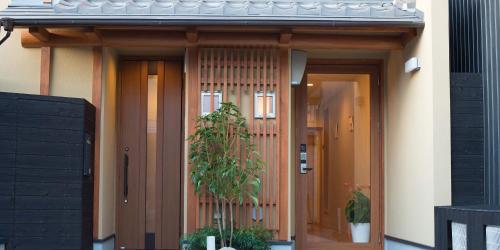
Kyo-Anthu Inn
Mid-range
Located in Kyoto and within 500 metres of Sanjusangen-do Temple, Kyo-Anthu Inn features a garden, soundproof rooms, and free WiFi. It is set 1.3 km from TKP Garden City Kyoto and provides full-day security. The guest house has family rooms. The guest house will provide guests with air-conditioned units offering a desk, a kettle, a fridge, a safety deposit box, a flat-screen TV and a private bathroom with a bidet. Some units also have a well-fitted kitchenette equipped with a microwave and a toaster. At the guest house, all units come with bed linen and towels. Guests at the guest house can enjoy a continental breakfast, and breakfast in the room is also available. Popular points of interest near Kyo-Anthu Inn include Kiyomizu-dera Temple, Kyoto Station and Gion Shijo Station. The nearest airport is Itami Airport, 44 km from the accommodation.
View on Booking.com
9.8Booking.com -

Guesthouse Engawa
Budget-friendly
Guesthouse Engawa offers accommodation in Kyoto. Guests can relax and enjoy the peace and quiet of Kyoto in their rooms. Each comes with a flat-screen TV, and an electric kettle will be provided upon request. Bathroom facilities are shared with other guests. Free toiletries and hairdryers are also available. There is luggage storage space at the property. Kiyomizu-dera Temple is 600 metres from Guesthouse Engawa, while Heian Shrine is 2.4 km from the property. The nearest airport is Osaka Itami Airport, 39 km from the property.
View on Booking.com
9.7Booking.com -
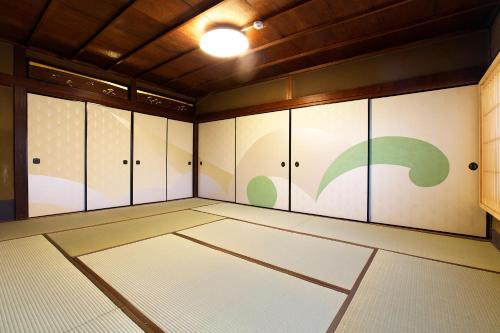
Gallery Nozawa Inn
Budget-friendly
Gallery Nozawa Inn offers accommodation in Kyoto, 25 minutes on foot from JR Kyoto Station. Free WiFi is available throughout the property. Every room includes a flat-screen TV and air conditioning. Each room is equipped with a private toilet, and bathrooms are shared. For your comfort, you will find free toiletries and a hairdryer. There is luggage storage space at the property. Guests can sample Japanese-style breakfast featuring seasonal ingredients. There is a public bathhouse located a 10-minute walk away. Nijo Castle is 2.4 km from Gallery Nozawa Inn, while Kyoto International Manga Museum is 2.4 km from the property. Osaka Itami Airport is 36 km away.
View on Booking.com
9.7Booking.com -
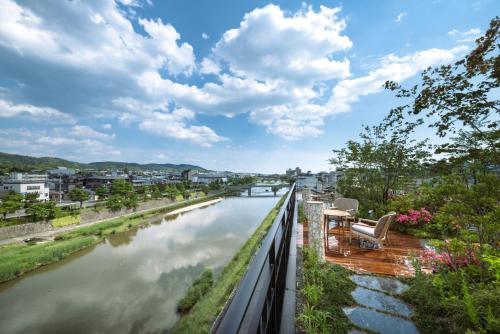
Genji Kyoto, a Member of Design Hotels
Luxury
Genji Kyoto, a Member of Design Hotels features free bikes, garden, a shared lounge and terrace in Kyoto. Among the facilities of this property are a restaurant, room service and a 24-hour front desk, along with free WiFi throughout the property. The property is 2.1 km from the city centre and 1.2 km from Sanjusangen-do Temple. All units will provide guests with a minibar. The hotel offers a continental or Full English/Irish breakfast. Popular points of interest near Genji Kyoto, a Member of Design Hotels include TKP Garden City Kyoto, Gion Shijo Station and Kiyomizu-dera Temple. The nearest airport is Itami Airport, 45 km from the accommodation.
View on Booking.com
9.7Booking.com -
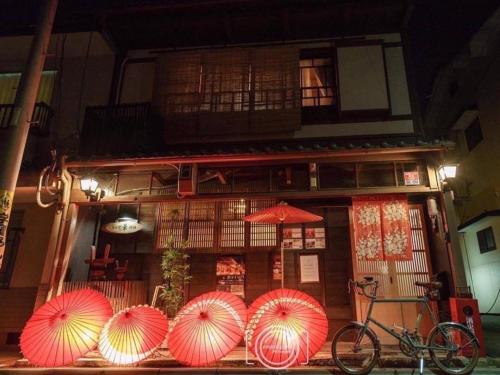
Guesthouse HANA Nishijin
Mid-range
Guesthouse HANA Kyoto is located in Kyoto, 300 metres from Kitano Tenmangu and 1.2 km from Kinkaku-ji Temple. A simple complimentary breakfast service is provided for guests. Bathroom facilities are shared. Guesthouse HANA Kyoto features free WiFi throughout the property. There is a shared kitchen and a common area with a TV at the property. Nijo Castle is 2.1 km from Guesthouse HANA Kyoto, while Imperial Palace is 2.3 km from the property. The nearest airport is Osaka Itami Airport, 39 km from Guesthouse HANA Kyoto.
View on Booking.com
9.7Booking.com
-
-
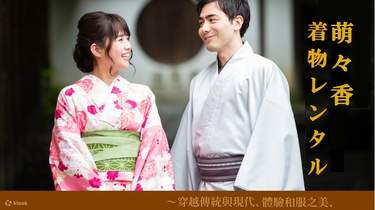
Kimono Rental in Kyoto by momoka
¥550
★★★★★
148
Basic okomon kimono plan: [Included in the fee]: Only okomon kimono and half-width obi are included [Excluded from the fee]: Small bag, tabi socks, rental sandals, muscle wear, and corrections are not included
View on Klook -
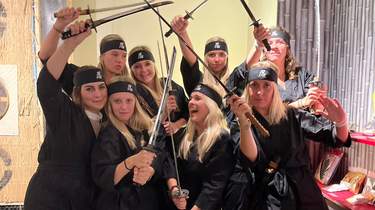
Ninja Experience Cafe in Kyoto
¥6,625
★★★★★
22
Learn more about this activity's [Enhanced Health & Hygiene Measures](https://www.klook.com/en-US/article/11049-covid-measures)
View on Klook -
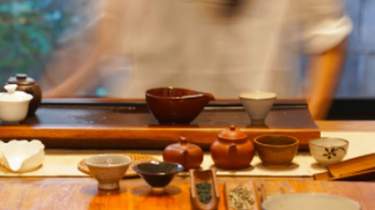
Matcha Ceremony Experience in Kyoto
¥5,000
★★★★★
12
You can enjoy watching the tea ceremony by the teacher and experience the tea ceremony. Comes with matcha and Japanese sweets!
View on Klook -
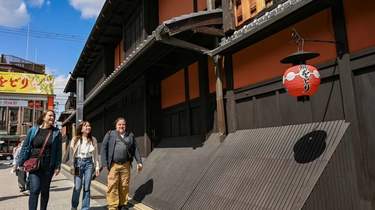
Kyoto Gion Memoirs of a Geisha Private Walking Tour
¥7,712
★★★★★
7
Experience the best of Gion�fs nightlife scene with a local insider to guide you
View on Klook -
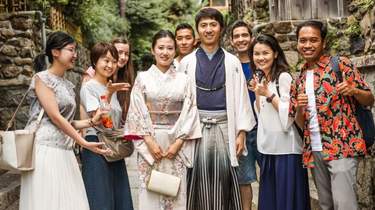
Must See Kyoto Private Tour
¥12,528
★★★★★
4
Get to know the real Kyoto with your host (a city local) and avoid the tourist traps, whilst still seeing the highlights!
View on Klook -
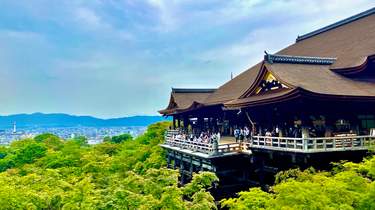
Kyoto Golden Route Day Trip Bus Tour from Kyoto
¥17,500
★★★★★
8
**We will take you to go unmissable sightseeing spots in Kyoto with English speaking guide. Let's explore together.**
View on Klook -
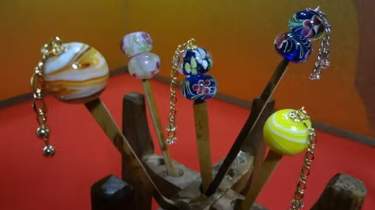
Handmade Workshop Experience in Kyoto
¥1,100
★★★★★
23
A townhouse with a nostalgic atmosphere. Feel free to visit the museum inside the store.
View on Klook -
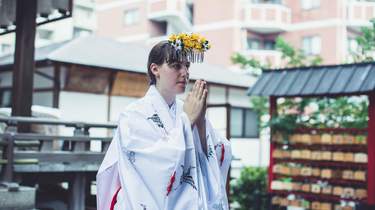
Shrine-Maiden Experience in Kyoto
¥10,125
★★★★★
14
In Japan, a "Miko" refers to a Shinto shrine maiden
View on Klook -
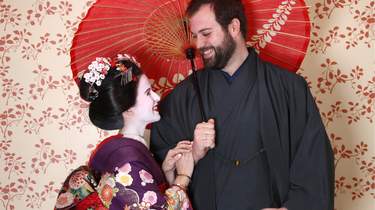
-
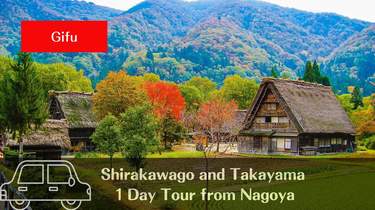
World Heritage Shirakawago and Takayama Private Tour from Nagoya
¥110,000
★★★★★
3
Learn about the history of Japanese traditional buildings at your leisure.
View on Klook
-